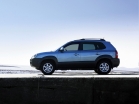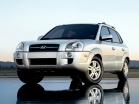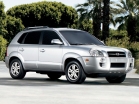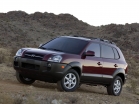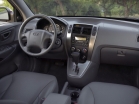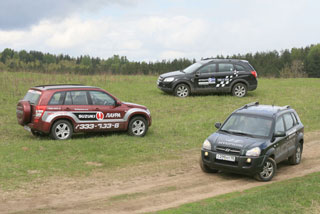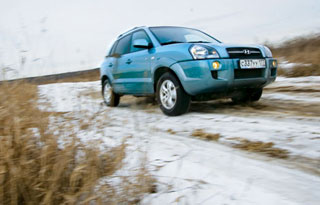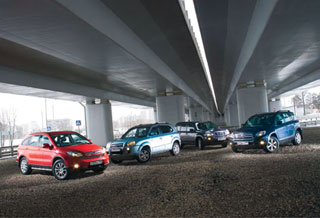Hyundai Tucson 2004 test drive - 2009 SUV
Miracles of subordination
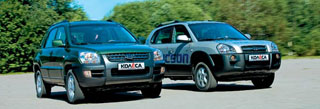 After the Hyundai Motor company gained control over Kia Motors in October 1998, the leadership of the newly educated group headed for the maximum unification of the model rows of both brands.
After the Hyundai Motor company gained control over Kia Motors in October 1998, the leadership of the newly educated group headed for the maximum unification of the model rows of both brands. Such a policy guarantees a sharp decrease in expenses, which, given the debts of KIA in the amount of nine billion dollars, acquired key importance. The first experience in the new strategy was the Magentis/Optima sedan, created on the basis of Hyundai Sonata IV, and today only the old men of Carens (1999) and Carnival (1997) remain in the system. Moreover, Spectra, the production of which was transferred to the Russian Izhmash last year.
This bowl did not pass this and Sportage. Of course, many would like to see the same full -fledged SUV in a frame of the frame structure in the second -generation car with a nearby transmission, but the Hyundai program did not provide for such a machine. Rather, it provided, but in a higher class, it is Terracan, which in the future generation will be unified with the successor to Kia Sorento. So Sportage II was simply doomed to duplicate the compact SUV HYUNDAI TUCSON. Which, in fact, happened.
The main question concerns the principles of subordination between the brands of Hyundai and Kia. Here in the Volkswagen concern, everything is clear: there is a general citizenship of Skoda, Volkswagen, Bentley and Bugatti, there is sports Seat, Audi, Lamborghini.
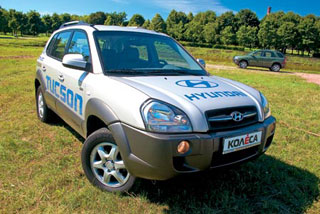 In the General Motors Corporation, the structure is even more transparent: democratic Chevrolet, sports Pontias, suicide Buick, sports and luxury Cadillac plus Saab in the role of prestigious imports. And how are the related Korean brands are positioned relative to each other? I remember that the initial agreement was like this: Hyundai produces machines with a soft character and rich equipment, Kia cars are simpler and more poeries. And cheaper than five to seven percent. Well, we will check the theory of practice. And in the role of experimental, Hyundai Tucson and Kia Sportage in top trim levels, with the same motors and gearboxes, will perform.
In the General Motors Corporation, the structure is even more transparent: democratic Chevrolet, sports Pontias, suicide Buick, sports and luxury Cadillac plus Saab in the role of prestigious imports. And how are the related Korean brands are positioned relative to each other? I remember that the initial agreement was like this: Hyundai produces machines with a soft character and rich equipment, Kia cars are simpler and more poeries. And cheaper than five to seven percent. Well, we will check the theory of practice. And in the role of experimental, Hyundai Tucson and Kia Sportage in top trim levels, with the same motors and gearboxes, will perform. The first look at immediately confuses all the cards. TUCSON FORPYSH, protected in a circle of unpainted plastic armor, is perceived as a working version. It is a lot of celebrations to leave urban asphalt and dare to adventure in the style of off-rock without risk to damage the body. By the way, we checked the off -road qualities of this couple in the company of Tussan. In automatic mode, the Torque-on-Demand transmission from the Borg-Warner transmits 99% of the torque to the front axle, and the car is suitable only for traveling on a slippery road or a tightly rolled primer. The rear axle is connected when slipping the front wheels using an electromagnetic coupling, and the moment of connection is not always predictable, and even accompanied by a tangible impetus.
However, this does not affect the reliability of management, since even when the coupling is triggered during the turning of Tucson, it clearly holds the trajectory. The car should not save before serious impassability. In this case, he has two magic buttons: the first forcibly blocks the interdosseous coupling, converting the transmission into a permanent all -wheel drive mode, the second disconnects the TCS anti -wings system. Nothing supernatural, but in most situations there are enough such funds.
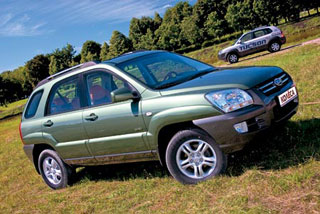 Sportage divers in every possible way retires from the modest of Tussan. Beautiful olive color, dashingly cut wheel arches, varnished bumers. What is the forest, the very time is in the theater! And if you are not only an esthet, but also a spicy lover, open the door and look inside. Shock! The skin of a shade of the setting sun, cool silver inserts, herbaceous backlight is some kind of paradise, and not a utilitarian interior! Warm, emotionally, cheerful! You will not find such a beauty in every convertible. And Tucson? Honestly, now looking at his dull gray landscape is sick. Even a leather finish is not happy. And this despite the fact that from the point of view of design, cars salons are almost the same, the difference is literally in the little things.
Sportage divers in every possible way retires from the modest of Tussan. Beautiful olive color, dashingly cut wheel arches, varnished bumers. What is the forest, the very time is in the theater! And if you are not only an esthet, but also a spicy lover, open the door and look inside. Shock! The skin of a shade of the setting sun, cool silver inserts, herbaceous backlight is some kind of paradise, and not a utilitarian interior! Warm, emotionally, cheerful! You will not find such a beauty in every convertible. And Tucson? Honestly, now looking at his dull gray landscape is sick. Even a leather finish is not happy. And this despite the fact that from the point of view of design, cars salons are almost the same, the difference is literally in the little things. Both Sportage and Tucson are very convenient and practical. By and large, everything is in order with ergonomics, although high drivers will have to sweat in search of the optimal steering wheel configuration. The rear seats are quite comfortable, despite the fact that they are located above the front. In a folded state, they form an absolutely flat floor, and if necessary, transporting long -sized objects, you can throw forward the back of the front right chair. The fasteners of the rear shock absorbers noticeably narrow the trunk on the sides, but its lid is equipped with a separate glass.
Both machines are equipped to the maximum, including in technical terms. The 175-horsepower six sparin with an automatic machine, which, contrary to archaic four-stageness, provides the opportunity to switch the transmission manually. But the parallel start over and over again wins Tucson! Both in manual mode, and in automatic. What is the matter? In the settings of the accelerator, which is more acute on the Hyundai, and KIA is dicked. So it turns out that at the very beginning of Sportage loses those several meters, which are then not able to play. And the manner of slowing down the machines is the same.
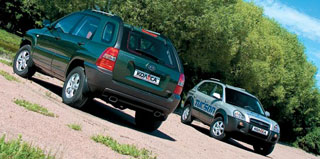 Suspensions work differently. True, all this is at the level of the nuances that still need to be felt, to catch. Nevertheless. It will be worse on the TUCSON go, it reacts more acutely to the coating micro -relief, but on a broken road, its suspension shows an enviable energy intensity. Hence the differences in controllability: Hyundai is more unambiguous in responses, more willingly dawn in corners and is less cracked. A little bit, but more unambiguous, more willing and less. At the same time, cars equally quickly perform the driver’s commands and provide it with a reliable feedback on the steering wheel. Sportage is more impressive, its suspension smoothes the chips of asphalt, joints and a purebink without a trace, but it is worth it to get a larger hole under the wheels, as the car shudders nervously with the whole body. I want to reset speed immediately, which is less manifested on Hyundai. In the turns, Kia gravitates to American moods: everything happens smoothly, without sharpness, and the car perceives attempts to step ascently, not the desire to indulge the owner.
Suspensions work differently. True, all this is at the level of the nuances that still need to be felt, to catch. Nevertheless. It will be worse on the TUCSON go, it reacts more acutely to the coating micro -relief, but on a broken road, its suspension shows an enviable energy intensity. Hence the differences in controllability: Hyundai is more unambiguous in responses, more willingly dawn in corners and is less cracked. A little bit, but more unambiguous, more willing and less. At the same time, cars equally quickly perform the driver’s commands and provide it with a reliable feedback on the steering wheel. Sportage is more impressive, its suspension smoothes the chips of asphalt, joints and a purebink without a trace, but it is worth it to get a larger hole under the wheels, as the car shudders nervously with the whole body. I want to reset speed immediately, which is less manifested on Hyundai. In the turns, Kia gravitates to American moods: everything happens smoothly, without sharpness, and the car perceives attempts to step ascently, not the desire to indulge the owner. In order for our comparative analysis to be objective, we turn to the financial side of the case, pleasing to its maximum specificity. The Hyundai Tucson GLS 2.7 V6 with a leather salon costs $ 32,790, or 933 144 rubles (as of September 19, 2005), and is covered with a guarantee of an importer of 5 years or 120 thousand km. Sportage 2.7 V6 with a guarantee of 3 years or 100 thousand km will cost 921,910 rubles. KIA is not only cheaper, but also richer is equipped with an electric drive, cruise control and a CD resort that are absent in Hyundai.
Tucson can respond with a large number of pillows (six), heating wiper brushes and automatic turning on the headlights. It turns out that there was no trace of past positioning. Sportage looks crowded, more prestigious, and it is distinguished by a mild character. Tucson is easier and more dynamic. And safer. These are the miracles of subordination.
Autography
Kia Sportage II
Still known as Hyundai Tucson
Predecessor Sportage (1994)
Hyundai Coupe GK platform
Premiere September 2004
Body wagon
Engines 2.0-2.7 l (112-175 hp)
Production of South Korea
Expected replacement 2010
Autography
Hyundai Tucson
Still known as Kia Sportage II
There is no predecessor
Hyundai Coupe GK platform
Premiere February 2004
Body wagon
Engines 2.0-2.7 l (113-175 hp)
Production of South Korea
Expected replacement 2010
The Hyundai Tucson car was provided by Vostok-Avto, an official dealer of Hyundai Motor
Kia Sportage is provided by KM-Neva, official Kia Motors dealer
During the test, the car is insured by Rosno.
Text: Leonid Klyuyev
Photo: Roman Ostanin
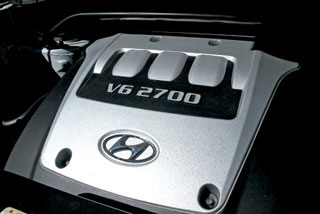
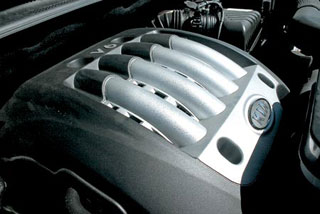
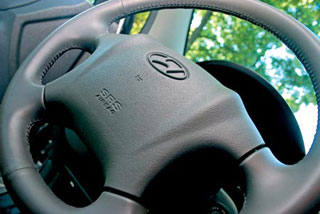
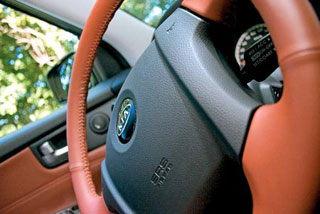
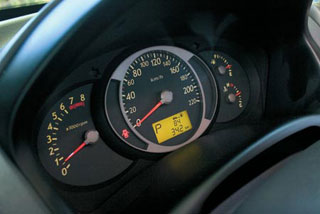
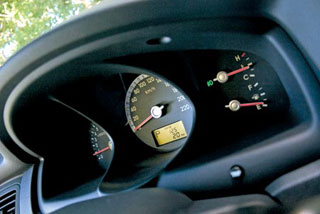
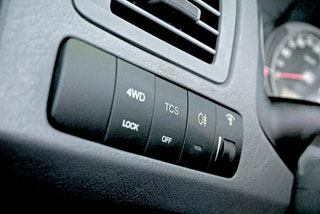
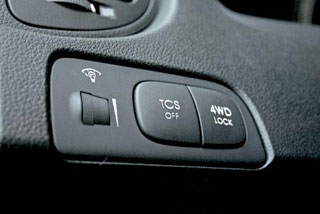
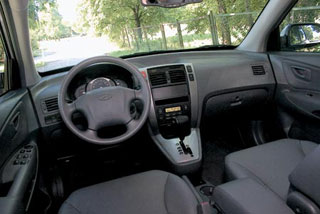
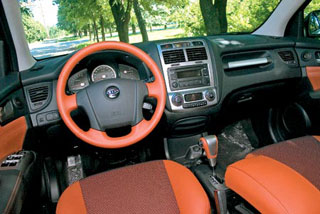
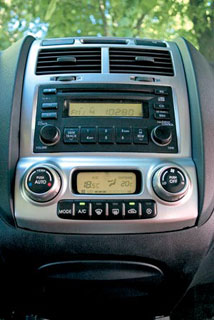
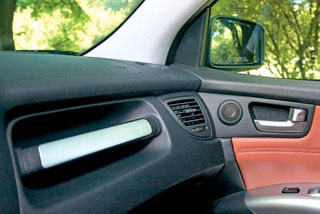
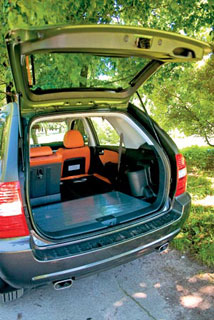
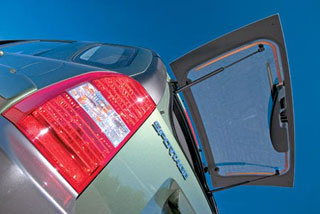
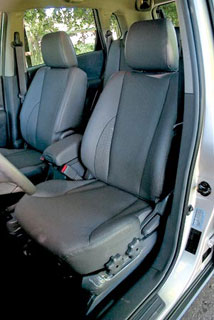

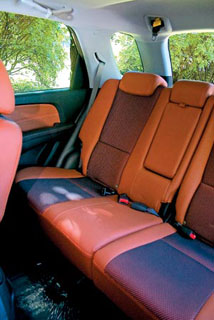
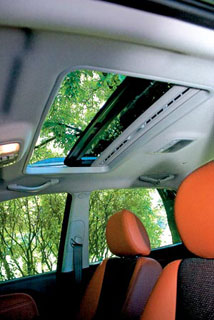
A source: Wheel magazine [No. 96/2005]
Hyundai Tucson 2004 Video Video - 2009
Hyundai Tucson 2004 - 2009 Crash Video.
Hyundai Tucson 2004 test drives - 2009
Hyundai Tucson 2004 Krash Test - 2009
Krassh Test: Detailed Information29%
Driver and passengers
4%
Pedestrians
32%
Children-passengers
Hyundai Tucson 2004 malfunctions - 2009
Hyundai IX35 (TUCSON) malfunctions: Detailed information| TUCSON 2004 - 2009 | |
|---|---|
| Engine |  |
| Transmission |  |
| Control system and suspension |  |
| Brake system |  |
| Air heating and air conditioning |  |
| Launch and charging system |  |
| Electric components and so on |  |
| Corrosion body stability |  |

